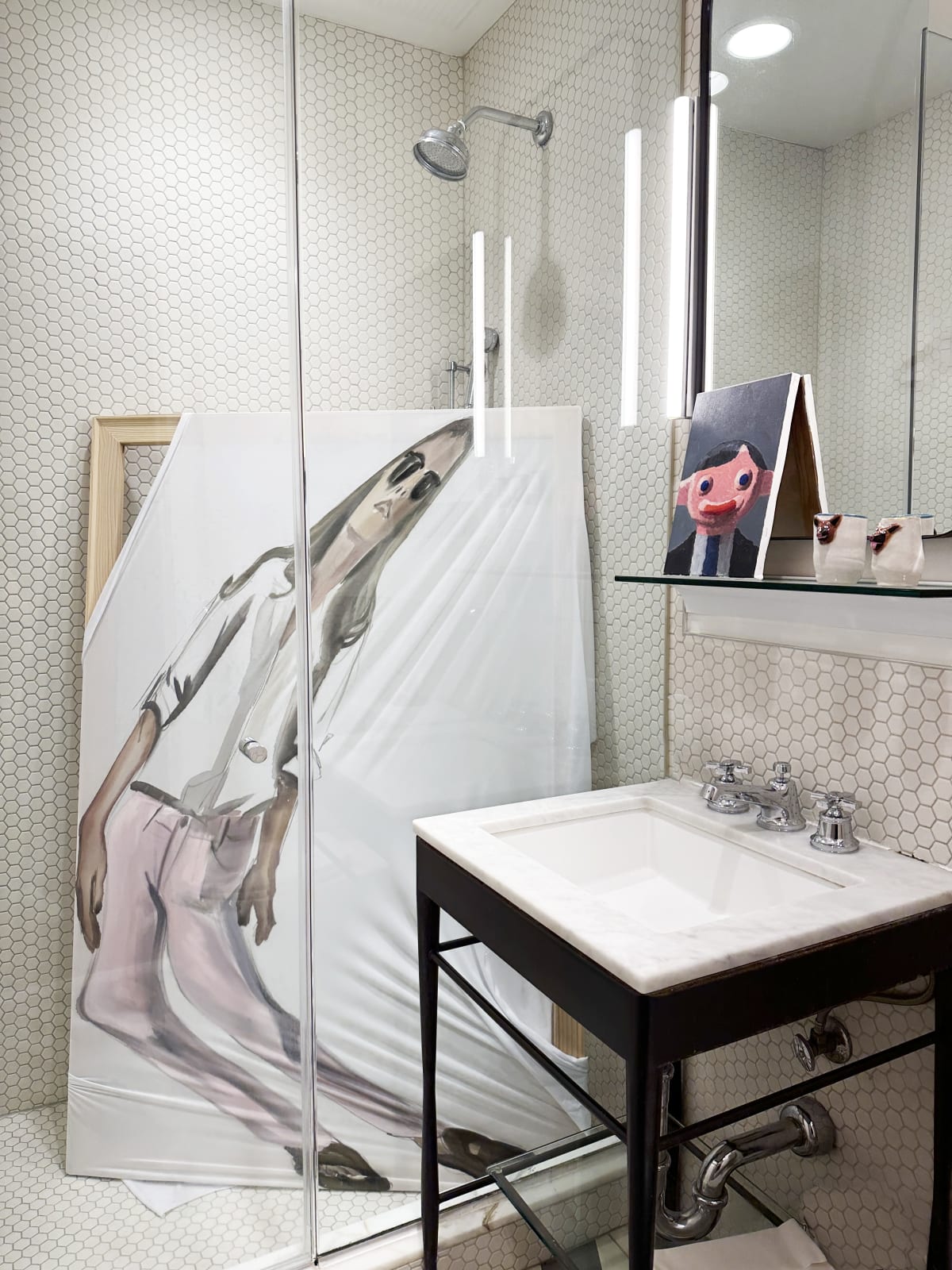Felix Art Fair 2024
Voloshyn Gallery is pleased to announce the gallery’s participation in the Felix Art Fair with a selection of works by international contemporary artists including Erika Jaeggli, Karol Radziszewski, Kinder Album, Lesia Khomenko, Lauren Cohen, Maria Sulymenko, Oleksiy Sai, and Vlada Ralko.
The works on display, which cover a wide range of themes and approaches, unite the artists through deeply narratives and ironic views of life. By bringing together different voices, approaches, and perspectives, the show fosters a dynamic artistic dialogue.
Maria Sulymenko's watercolours fascinate with their simplicity, depicting mysterious environments and lonely figures caught in an in-between moment. There is no sense of the passage of time in the image, the artist depicts a captured moment that stretches on and turns into a state. Sulymenko's surreal world is a liminal space, a frozen moment between reality and imagination, between nostalgia and sadness, between comfort and anxiety.
The playful and ironic character is reflected in the Kinder Album series of sculptures. The plots played out here mostly concern either the murder or suicide of the characters whose provocative details of life are revealed in the drawings. But even here, the viewer is left wondering whether all the "non-obvious" characters are known and whether they are potentially recognisable. The sculptural scenes are signed in a demonstrably neutral way: "Incident No. _", so the viewer will have to rely only on their own discretion and ingenuity to find out what happened to the characters. Kinder Album creates a form that imitates a child's manner of performance and resonates with the "adult" themes and subjects that the artist works with - this is the effect that distinguishes the author from other artists.
Vlada Ralko's paintings from the series "Signs" (2008) are painted with an expressive, contrasting, rich colour palette and represent deformed parts of the female body with hypertrophied gender characteristics; often slightly mutated in such a way that the human figure turns into abstract spots, a kind of bloody mess of beautiful strokes left by a wide brush. In her work, the artist reveals a whole set of problems of self-identification of a post-Soviet person.
Erika Jaeggli's work on view is the result of her fieldwork in seven caves in Texas, which she explored through photography, videography, LiDAR scanning, and drawing and writing techniques. She anchors her photographic collages with cast layers of encaustic wax, which, when hardened,
indicate the gravity and time of the caves' formation. Jaeggli's paintings emphasise the darkness of the cave as a contemplative state that evokes a guttural response and encourages a reverse movement in time.
The works from the series of self-portraits "Nomadic Self-Portrait With Rolled Canvas" (2023 - ongoing) by Lesia Khomenko involve the representation, rupture and rethinking of the artist's experience of evacuation and subsequent migration caused by the war in her homeland. In her works, the artist explores and reflects the dynamism and permanent change of identity. As an artist in exile, Lesia has to constantly move with her work. A rolled-up canvas became the main artistic object for the author herself during the war.
In the project “Antoine de Paris” (2023 - ongoing), Karol Radziszewski continues to explore the topic of queer history of Eastern Europe. This project is dedicated to Antoine de Paris (Antoni Czarplikowski, 1884-1976), a Polish hairdresser who became the world's first celebrity hairdresser when he opened the Antoine de Paris salon in Paris and became known as Monsieur Antoine. Karol Radziszewski breaks the established framework of heteronormative perception of history by recreating the images of prominent cult figures and famous representatives of the queer community, superimposing their personal identity on the collective experience.
Oleksiy Sai presents his project Excel-art. Sai has been working with Excel as a visual language resource since 2004. Sai offers an emphatically neutral and objective depiction of the life of office workers in all its aspects, without criticising or parodying the corporate lifestyle. The artist rethinks the role of the "office" lifestyle as a social norm, portraying office workers as a semi-extinct species that will soon disappear from the historical scene.
Another Oleksiy Sai’s “We became better” series depicts portraits of small office workers, or tin soldiers. These are faceless managers, which went through the aging process and have acquired personal features. We are witnessing the new class being formed - «office plankton» and after 20 years of their careless existence, we can observe their retreat from the ideals of the consumer society, the soldiers become more humane.
A particularly interesting and ironic story is revealed in the works of the American artist Lauren Cohen. Her ceramics tell the story of a fictional character, Brian, who appears as a complex embodiment of everything
Cohen values and fears about the opposite sex and herself. Rooted in her personal odyssey to heal deep-seated trauma, the artist explores the complex dynamics of love. The protagonist sells off his real estate, and the audience is invited to delve into the various oddities that have emerged from the inner spaces of the artist's psyche. He loves Martha Stewart, Food and Wine magazine, men's buttocks and cooking, but has no one to share his life with. He still sincerely believes in love, but is frustrated by his loneliness. In the realm of material wealth, the saying "one man's trash is another man's treasure" rings deeply true, reminding us of the innate subjectivity that governs our perception of value. At the time of the sale, no one will know whether Brian is alive or dead, which makes us think about what someone creates, collects or values in life.
Room 1206
Felix Art Fair 2024
February 28 - March 3, 2024
Hollywood Roosevelt Hotel, Los Angeles, USA
For all press inquiries, contact: info@voloshyngallery.art






















